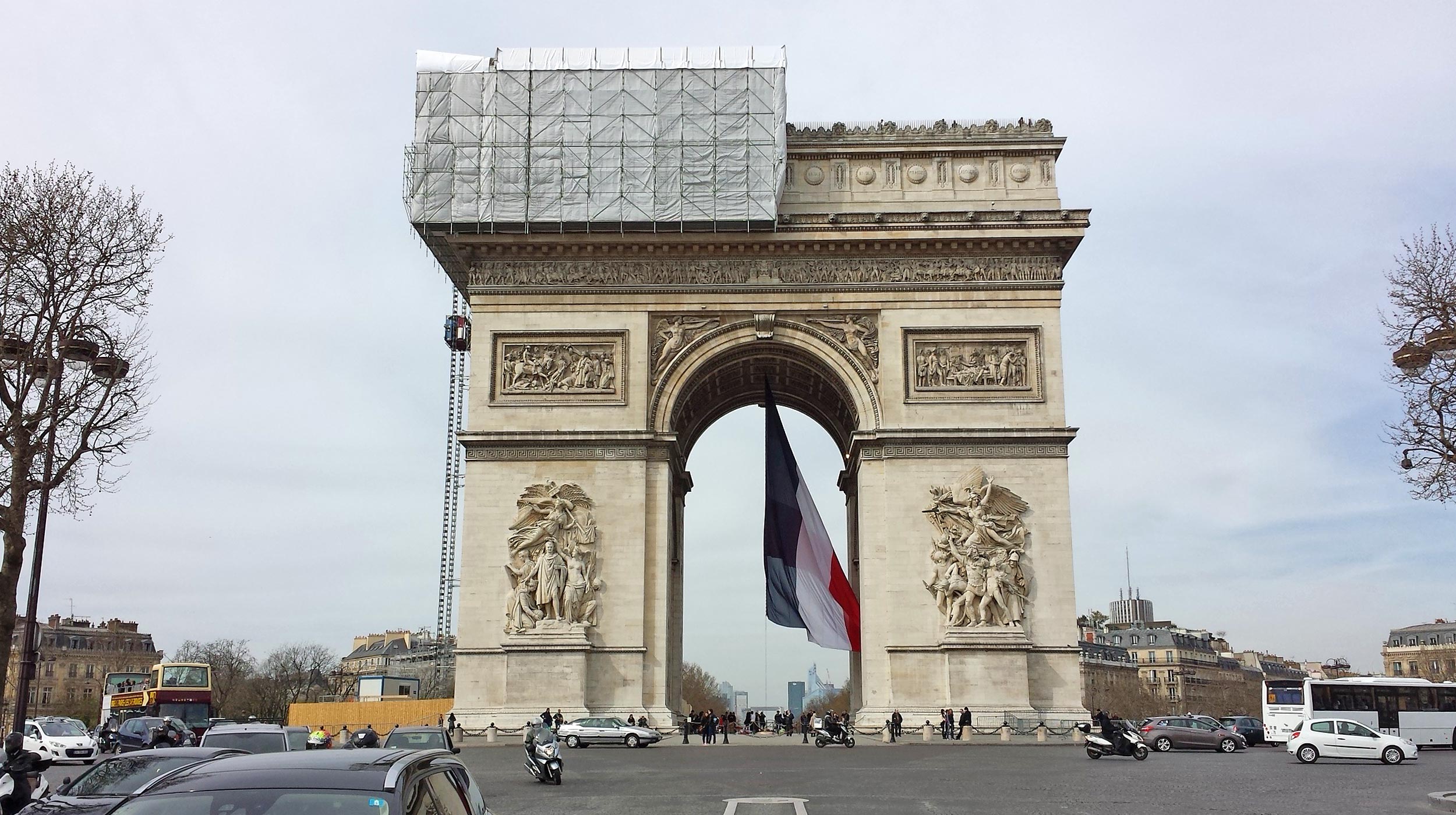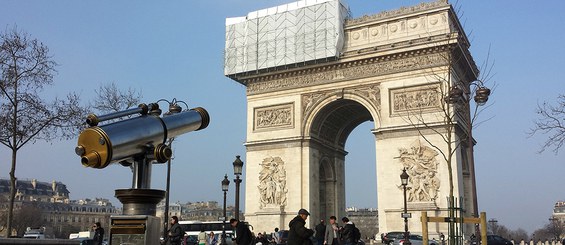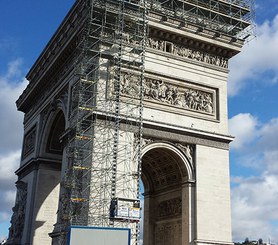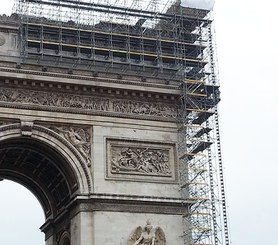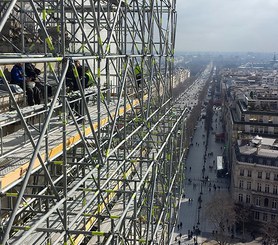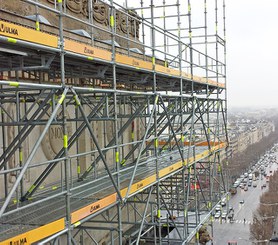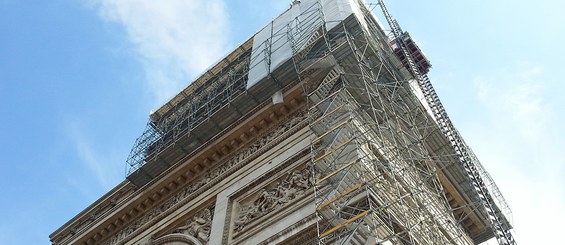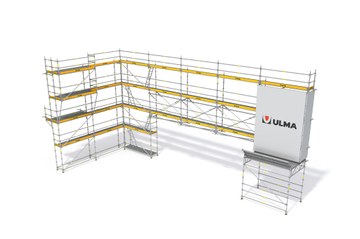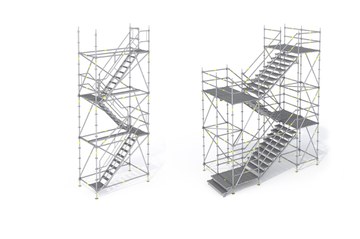Description
Located at the end of Avenue des Champs-Élysées, the Arc de Triomphe stands at 50 m in height, 45 m in width, and 22 m deep. The iconic structure was fully restored.
Four hundred and fifty square metres of leaden decking were restored on the mid- and upper-cornices. A lighting system was installed to once again illuminate the upper reaches of the arch, which have been dark for some years. The north and south oculi of the upper hall were modified so as to facilitate museum ventilation.
ULMA Solution
In order to complete this project more than 150 t of multidirectional BRIO scaffolding were supplied.
The scaffolding was anchored to the central vault of the terrace and fitted, at more than 50 m above ground, with a covering built with aluminium frames and beams providing protection from inclement weather. This structure proved to be one of the biggest technical challenges of the project.
Heavy-duty cantilevered working platforms measuring more than 4 m were also used. The BRIO scaffolding structure was attached to the monument with anchors set in the terrace vault and attic.
So as to ensure good working conditions during the restoration, a goods lift and stairway were used in addition to a rail and winch system used to We worked not only to restore the monument, but also to ensure continued visitor access throughout the restoration process transport the leaden decking around the monument periphery. Two levels of specialised working platforms were supplied with a horizontal and vertical canvas covering.
Considering the large quantity of daily visitors, another major challenge of the project was to allow for continuous tourist access to the Arc de Triomphe terrace.
The terrace has only one entrance and exit, making it necessary to create a special passageway so as to complete the restoration work without disturbing tourist activity. Protected areas and walkways were maintained throughout the project and moved according to necessity as the work progressed.

